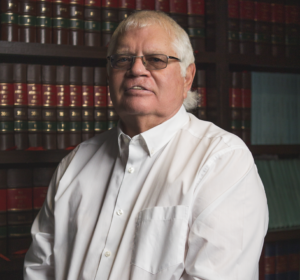The Pleading and Proof of Tacit Contracts

The Pleading and Proof of Tacit Contracts
Published on January 19, 2023
Tacit contracts or clauses form part of our law of contract. Lawyers are familiar with allegations in pleadings that the parties have entered into express, alternatively tacit agreements or clauses. To establish if and when a tacit agreement had been entered into in particular circumstances is not always evident.
The following examples illustrate the difficulty in establishing tacit agreements:
These examples illustrate that each matter depends upon its own facts, circumstances and context. A party, relying on a tacit contract or clause is thus required to set out the facts or circumstances from which the tacit contract/clause is to be inferred, in its pleadings.
The Appeal Court (as it was) initially applied seemingly conflicting tests for inferring the existence of tacit contracts.
The no other reasonable interpretation test was stated in Standard Bank of South Africa Ltd. vs. Ocean Commodities Inc. 1983 (1) S.A. 276 (A) as follows:-
In order to establish a tacit contract, it is necessary to show by a preponderance of probabilities, unequivocal conduct which is capable of no other reasonable interpretation than that the parties intended to, and did in fact, contract on the terms alleged. It must be proved that there was in fact consensus ad idem.
In Joel Melamed and Hurwitz vs. Cleveland Estates 1984 (3) S.A. 155 (a) reference was made to the preponderance of probability test:
In this connection it is stated that a Court may hold that a tacit contract has been established whereby a process of inference, it concludes that that the most plausible probable conclusion from all the relevant proved facts and circumstances is that a contract came into existence
Since both tests rely on reasoning by inference, the general rules for such reasoning ought to be applied:
(i)(1) the inference sought to be drawn must be consistent with all the proved facts if it is not, the inference cannot be drawn;
(i)(2) the proved facts should be such that they exclude every reasonable inference from them save the one sought to be drawn. If they do not exclude other reasonable inferences, then there must be doubt whether the inference sought to be drawn is correct.
(ii) every offer and every acceptance must be unequivocal, i.e. positive and unambiguous.
the test for finding a tacit contract should not differ materially
from the test for finding a tacit terms in contract. The question in each case is whether agreement can be inferred from the proved facts and circumstances.
Christie (The Law of Contract) argues that it is not necessary to abandon either test entirely and argues for a synthesis which incorporates the best of both tests. The best approach to a synthesis involves three states:
The first stage is to decide on the preponderance of probabilities,
what facts have been established.
The second stage is to decide how the proved facts, that is, the
conduct of each party and the surrounding circumstances, “must” have been interpreted by the other.
The third stage is to decide also on a preponderance of probabilities,
what conclusion consistent with those facts is most likely to be correct.
The Supreme Court of Appeal in 2019 in Buffalo City vs. Nurcha Developments 2019 (3) SA 379 (SCA) put to rest the apparent conflicting test by relying on what was said in Butters v. Mncora 2012 (4)S.A. (1)(SCA):
This appeal is about an alleged tacit agreement. As in all cases the court searches the evidence for manifestations of conduct by the parties that are unequivocally consistent with consensus on the issue that is the crux of agreement and, per contras, any indication which cannot be reconciled with it. At the end of the exercise, if the party placing reliance on such an agreement is to succeed, the court must be satisfied, on a conspectus of all the evidence that it is more probable than not that the parties were in agreement, and that a contract between them came into being in consequence of their agreement.
A party thus relying on a tacit contract/term even as an alternative to an express contract, must plead that the contract/term is tacit. At trail, a party must produce evidence of the parties' conduct that justifies a reasonable inference that the parties intended to and did indeed contract on the terms alleged - in other words that there was in fact consensus ad idem amongst the parties.

C.M. Weiss
Practicing Consultant
Why you should choose us
At MW Attorneys we believe that quality of services counts and not quantity. We believe in sincere and continuous communication with our clients and we strive to deliver services of the highest quality, as we have been doing since 1997. We regard our clients as our most important asset!
MW Attorneys has a proven track record since:
1900
